Feed costs are pivotal in determining profitability and sustainability in poultry production. Managing chicken feed costs and optimizing poultry diets without compromising nutrition With the rising prices and limited availability of traditional feed ingredients, poultry farmers need to adopt economic strategies that ensure the well-being of their flocks while maintaining financial viability. In this blog, we will explore practical approaches to formulating nutritious poultry diets while keeping an eye on the economic factors that impact the industry.
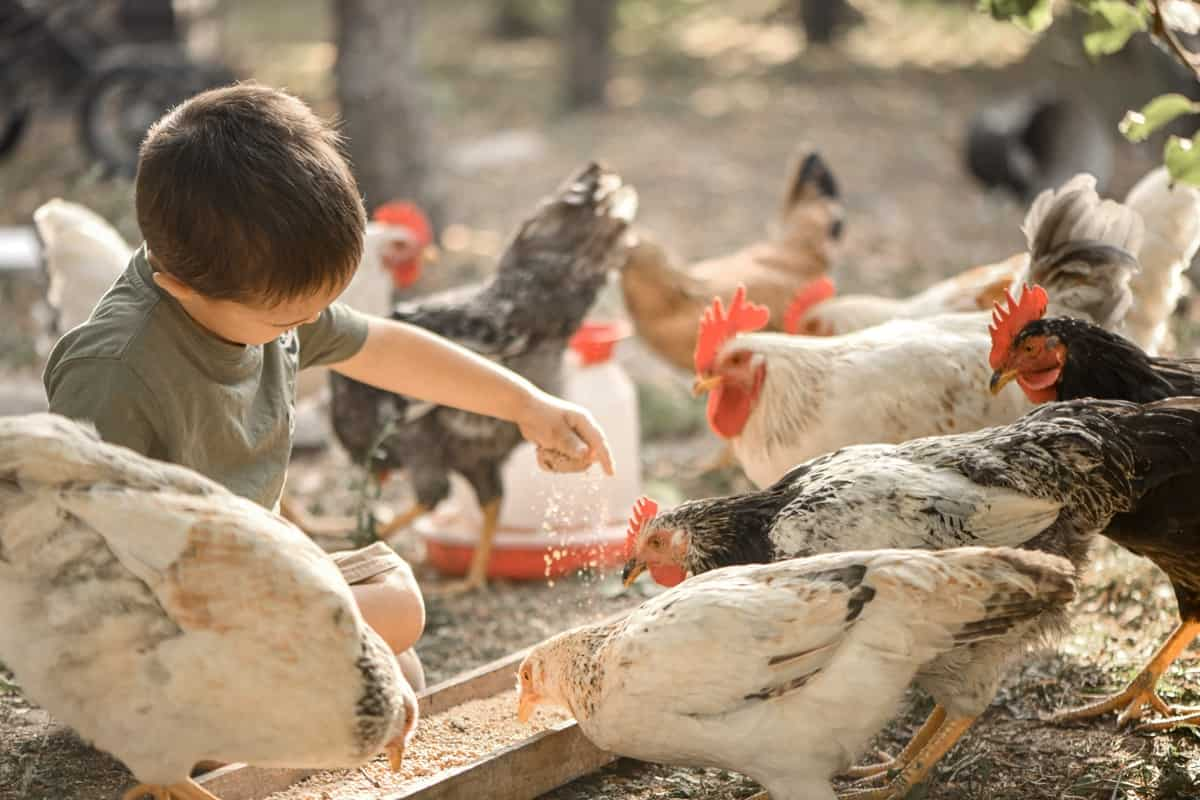
How to Manage Chicken Feed Costs
What is a Nutritious Poultry Diet?
A nutritious poultry diet is essential for the health and productivity of chickens. It refers to a well-balanced feed that provides the necessary nutrients for optimal growth, development, and egg production. A typical poultry diet includes energy sources like grains, protein sources such as soybean meal, essential amino acids, vitamins, minerals, and water. These nutrients are carefully formulated to meet the specific requirements of different poultry species and production stages.
Compared to other livestock, feeding poultry is currently more economical. Poultry farmers can formulate cost-effective feed formulations by utilizing locally available, unconventional, and low-cost feed ingredients. However, these unconventional feed ingredients require additional nutrient supplementation, such as amino acids, toxin binders, and micronutrients.
Why is the Feed Cost Increasing?
- Feed cost is a major constraint in poultry production and significantly impacts profitability.
- Cereals and edible oilseed meals in poultry diets directly compete with human consumption.
- Limited opportunities for expanding cultivation areas pose challenges in ensuring feed availability for poultry production.
- To sustain the poultry industry, reducing production costs, meeting consumer demands for safe and high-quality products, and ensuring bird welfare are crucial.
- Factors like monsoon failure, low productivity, pests, environmental concerns, and declining cultivation areas cause fluctuations in feed ingredient production.
- Farmers are encouraged to focus on cash and commodity crops, leading to a decrease in poultry feed ingredient production.
- The feed industry has experienced significant cost increases for ingredients like maize and soya meals, impacting profitability for commercial broiler farms.
- Average production costs for broiler farms have risen from around Rs. 55-60/kg in 2013 to over Rs. 65-70/kg in 2015 due to higher feed costs.
Effective Ways to Reduce Chicken Feed Costs
Optimize Feed Formulation: Work with a poultry nutritionist to fine-tune the nutrient composition of feed, ensuring it meets the specific requirements of your birds. Avoid over-supplementation and unnecessary ingredients.
Incorporate Alternative Feed Ingredients: Explore affordable alternatives to traditional feed ingredients such as agricultural byproducts, food waste, or insect meals. These can offer cost savings while maintaining nutritional value.
In case you missed it: Strategies for Maximizing Egg Production in Your Chicken Farm: Tried and Tested Strategies
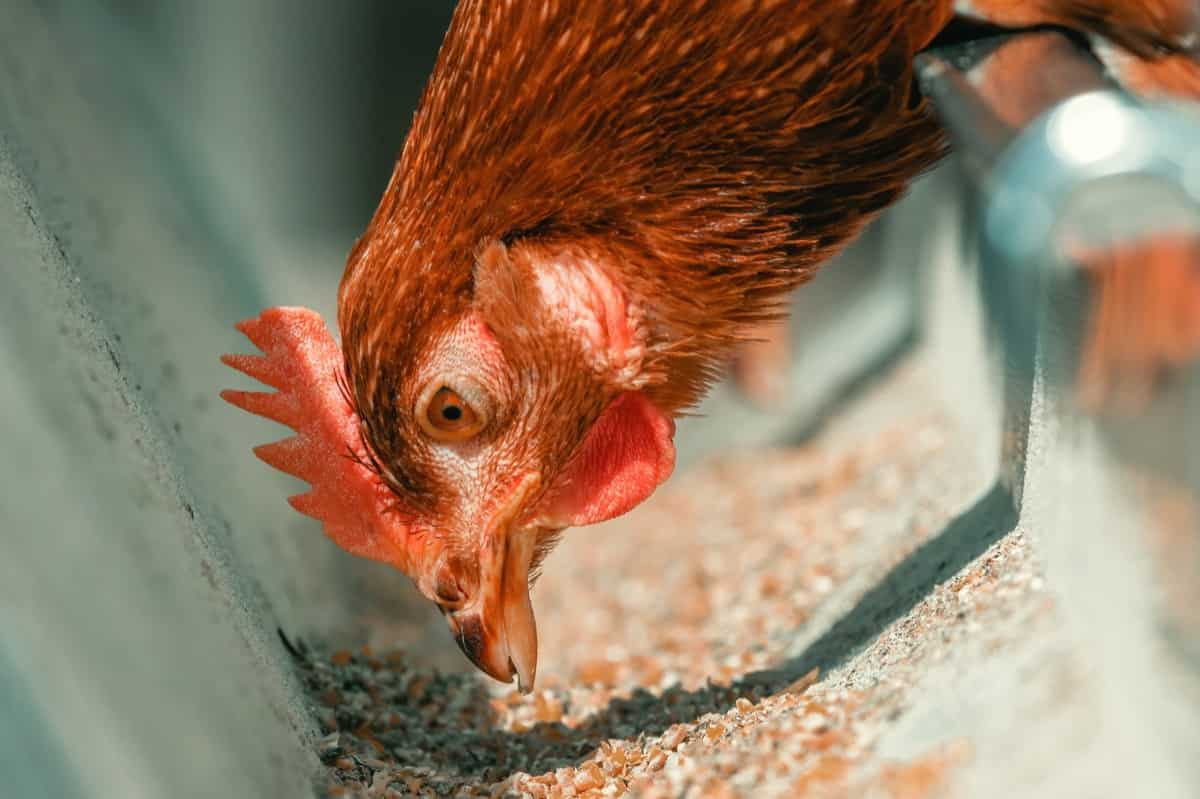
Practice Precision Feeding: Implement techniques that match the nutritional needs of different bird groups at specific growth stages, avoiding excessive or wasteful feeding.
Enhance Feed Efficiency: Use feeders that minimize wastage, control access to feed, and provide adequate feeder space to reduce competition and feed spillage.
Consider On-Farm Feed Production: Evaluate the feasibility of producing your feed on-farm, utilizing locally grown grains and other ingredients. This can provide cost savings and greater control over feed quality.
Bulk Purchasing and Cooperative Buying: Collaborate with other farmers or join purchasing cooperatives to benefit from bulk buying discounts, reducing the overall cost of feed ingredients.
Implement Good Storage Practices: Store feed properly to avoid spoilage and nutrient degradation. Protect against moisture, pests, and temperature fluctuations affecting feed quality and safety.
Monitor Feed Conversion and Bird Performance: Regularly track feed consumption, growth rates, and flock health to identify issues or inefficiencies. Adjust feeding programs accordingly to optimize feed utilization.
Affordable Alternatives to Traditional Poultry Feed Ingredients
A wide range of alternative feedstuffs can be utilized in poultry production, particularly in traditional family poultry systems, semi-commercial systems, and backyard setups. In semi-commercial systems, where only a portion of the feed is purchased from commercial compounders, on-farm mixing or diluting feeds with locally available alternative feedstuffs is an option. These alternative feedstuffs can supplement the scavenging feed base for low-input family poultry systems.
- Energy Sources: With increasing demand for energy sources in poultry feed, combinations of maize with other cereals like pearl millet, finger millet, and sorghum can be tried.
- Utilizing different cereals and oilseed residues, such as broken rice, rice polish, maize grit, and de-oiled rice bran, can effectively replace maize.
- Edible oils and fats also play a significant role in substituting maize as an energy source. Newer energy sources, like biofortified maize varieties, show the potential to meet the nutritional requirements of poultry.
- Protein Sources: Soybean meal is commonly used as the main protein source in poultry feed due to its high protein content and digestibility. However, the cost of protein sources can be reduced by incorporating alternate ones.
- Combinations of rape seed meal and sunflower seed meal, groundnut meal and niger meal, or other byproducts like guar meal, cottonseed meal, sesame meal, and rice gluten meal have been found to support optimal growth and profit margins in broilers and egg production.
- Limitations exist in using certain protein sources due to factors such as glucosinolates, tannins, erucic acid, fiber content, cost, and availability.
- Animal Protein Feedstuffs: Fish meal availability is limited and costly, leading to the exploration of other animal protein sources such as meat cum bone meal, meat meal, blood meal, and poultry slaughterhouse waste meal. These feedstuffs can be used as alternatives to soybean meal, albeit within safe limits.
In case you missed it: Maximizing Efficiency: How to Optimize Chicken Farm Operations
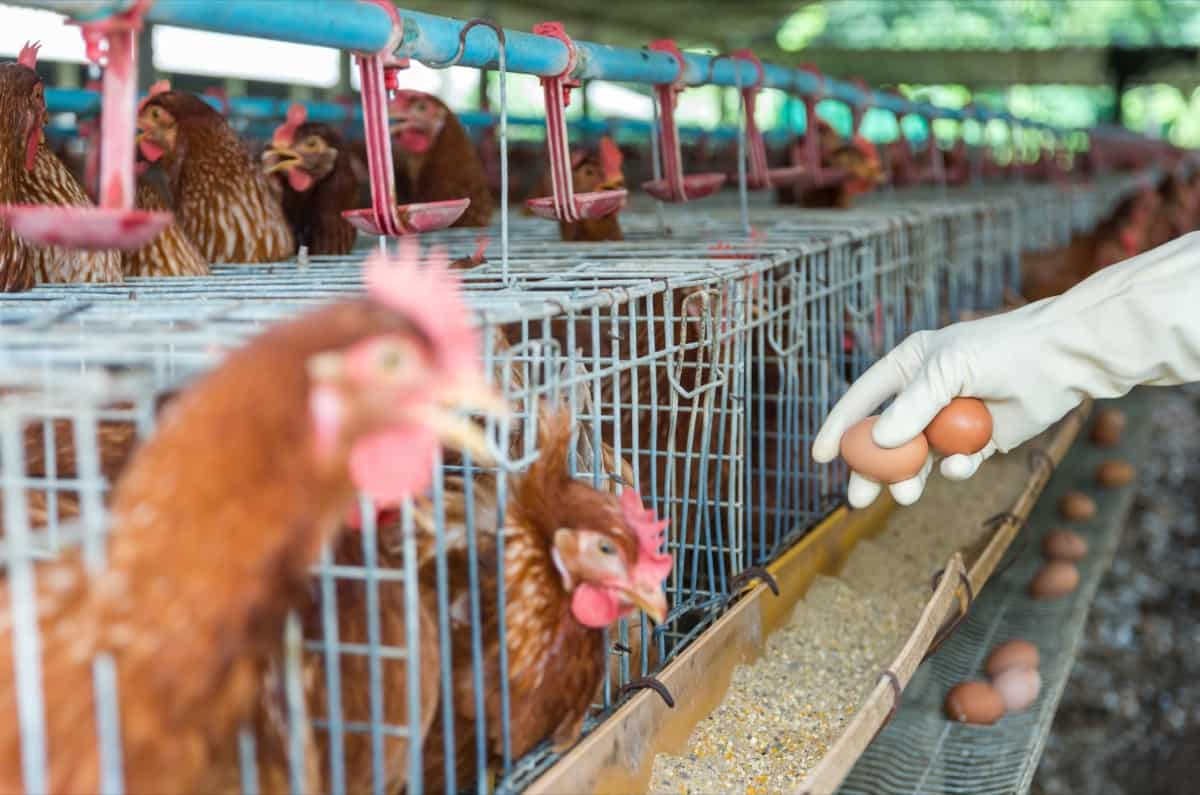
Nutrition and Feeding of Poultry for Chicken Production
- Feed is the most important input component for poultry production, and affordable, high-quality feed is crucial for the industry’s growth.
- For optimal performance and health, poultry requires a consistent supply of energy, protein, amino acids, minerals, vitamins, and water.
- Advances in poultry nutrition focus on understanding nutrient metabolism and requirements, assessing nutrient availability in feed ingredients, and formulating cost-effective diets.
- Practical poultry diets contain various ingredients like grains, byproducts, fats, plant protein sources, supplements, amino acids, and additives.
- The rising costs and limited availability of traditional feedstuffs may impact poultry production, emphasizing the need for alternative feeds and reduced reliance on human-edible components.
- Contamination of poultry feed, especially with mycotoxins in hot and humid conditions, poses significant risks to bird performance and product safety.
- Poultry is a highly efficient feed converter compared to other livestock species.
- Improving feed efficiency plays a crucial role in reducing the impact of poultry production.
- Poultry feed primarily utilizes cereals and legumes that could be used directly for human consumption.
In case you missed it: Raising Kadaknath Chickens (Black Chicken) in India: Check How this Guide Helps Profitable Kadaknath Poultry Farming from Scratch
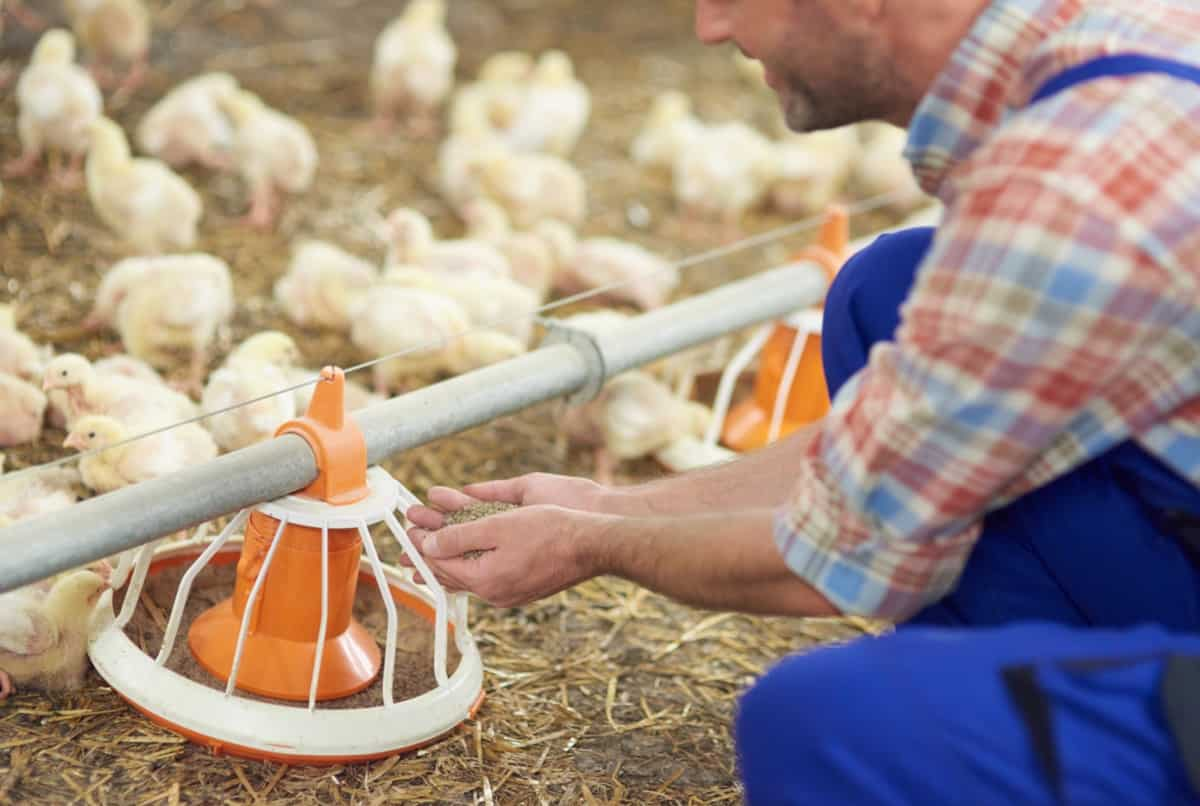
How to Balance Cost and Nutrition in Poultry Diets
- Nutrient Requirements: Understand your poultry’s specific nutrient requirements at different growth and production stages. This knowledge will help you formulate diets that meet their nutritional needs without excess or deficiency.
- Feed Ingredient Evaluation: Assess different feed ingredients’ costs and nutritional value. Consider using cost-effective alternatives without compromising essential nutrients.
- Formulation Software: Utilize specialized software that calculates the nutrient composition of feed formulations based on ingredient prices and availability. This enables you to adjust formulations according to cost while maintaining nutritional adequacy.
- Least-Cost Formulation: Employ least-cost formulation techniques to optimize ingredient combinations and minimize feed costs while meeting nutritional requirements.
- Feed Efficiency: Improve feed efficiency using techniques that reduce waste, such as controlled feeding or feeders designed to minimize spillage.
- Feed Additives: Consider incorporating feed additives like enzymes, probiotics, or phytogenics that enhance nutrient utilization and improve overall performance, potentially reducing the need for costly dietary components.
- Farm Management Practices: Implement proper flock management practices, including hygiene, disease prevention, and appropriate vaccination protocols. This helps maintain bird health and reduces the risk of costly production losses.
- Regular Monitoring: Monitor bird performance, feed consumption, and production metrics continuously. Regularly evaluate and adjust feeding programs to optimize efficiency and minimize feed costs.
Strategies for Optimizing Chicken Feed Efficiency
Balanced Diet: Ensure that the poultry diet is well-balanced and meets the specific nutritional requirements of the birds at each stage of growth. This includes providing energy, protein, vitamins, minerals, and essential amino acids.
Feed Formulation: Work with a poultry nutritionist to formulate diets that optimize nutrient utilization and minimize waste. Use quality ingredients and consider the availability and digestibility of nutrients in the feed.
Feed Particle Size: Properly grind or process the feed to achieve an appropriate particle size that promotes better digestion and nutrient absorption. Finely ground feed may enhance the digestibility and utilization of nutrients.
Feed Management: Implement controlled feeding programs to avoid overconsumption and reduce feed wastage. Provide adequate feed space, ensure regular feeding schedules, and monitor feed consumption to adjust feeding levels accordingly.
Feed Quality Control: Regularly assess the quality of feed ingredients and finished feeds to ensure they meet nutritional standards. Monitor for contaminants, such as mycotoxins, which can impact bird health and performance.
In case you missed it: How to Start Country Chicken Farming from Scratch in Andhra Pradesh: A Step-By-Step Guide for Beginners
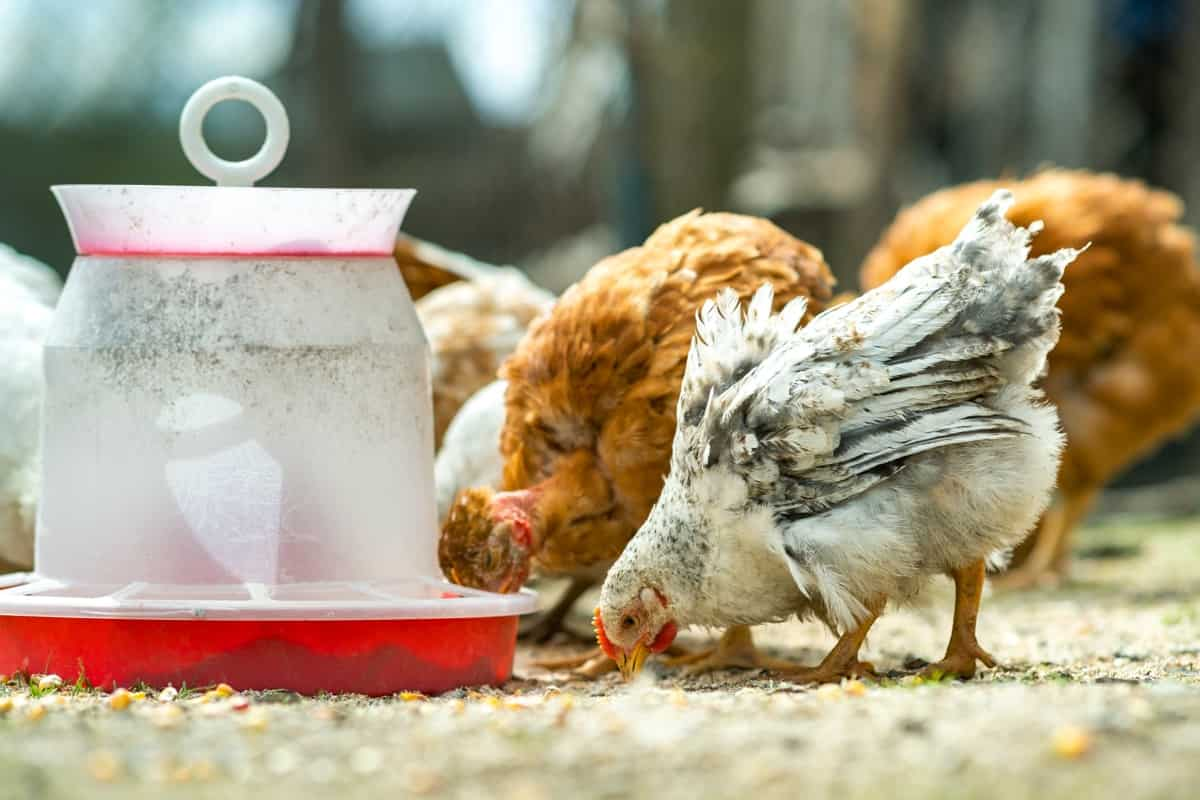
Water Management: Provide clean and fresh water at all times. Water intake is closely linked to feed consumption and overall bird performance. Proper hydration optimizes digestion and nutrient utilization.
Environmental Conditions: Maintain optimal temperature, humidity, and ventilation in the poultry house. Stressors like extreme temperatures or poor air quality can reduce feed intake and efficiency.
Cost-saving Measures for Poultry Farmers in Feed Management
- Balanced protein in the feed plays a significant role in achieving margin and profitability. However, it’s important to consider balanced protein and energy in the nutritional package.
- The growth of the biofuels industry has impacted feed energy prices, which are now influenced more by oil prices than conventional commodities markets.
- This, combined with the increased use of cereals and feed fats for biofuels and firm oil prices, is expected to result in higher energy costs.
- Deriving a balanced diet with feed supplements and additives is an objective of feed formulation. In addition to energy and protein, formulations include supplements for minerals, vitamins, and specific amino acids essential for health and performance.
- Non-nutritive additives also play a crucial role in performance and health. Mixing these supplements and additives carefully with the main ingredients is essential to ensure even distribution.
The Role of Alternative Feed Sources in Reducing Poultry Production Costs
By incorporating these alternative feed sources into poultry diets, farmers can reduce dependency on expensive traditional feed ingredients, lower production costs, and promote sustainability in poultry production.
Insect Meals: Insects, such as black soldier fly larvae, mealworms, and crickets, are rich in protein and can be a sustainable and cost-effective protein source in poultry diets. Insect meals offer a viable alternative to traditional protein sources like fish or soybean.
Food Waste: Certain food byproducts and leftovers, such as vegetable trimmings, fruit peels, and bakery waste, can be processed and incorporated into poultry diets. Proper treatment and processing ensure safety and improve the utilization of food waste as a valuable feed resource.
Agro-Industrial Byproducts: Byproducts from agricultural and industrial processes, such as rice bran, wheat bran, corn gluten feed, and distillers’ grains, can be utilized as feed ingredients for poultry. These byproducts offer a cost-effective alternative to traditional feedstuffs while reducing waste.
Algae: Certain types of algae, such as spirulina and chlorella, are rich in nutrients, including protein, vitamins, and minerals. Incorporating algae-based products into poultry diets can provide a sustainable and economically viable source of nutrition.
Single-Cell Proteins: Single-cell proteins (SCP) are produced from microorganisms like bacteria, yeast, or fungi. These microorganisms can be cultivated on various organic substrates, including agricultural residues or waste materials, to produce protein-rich biomass used as a feed ingredient.
Economic Benefits of Formulating Poultry Diets
By formulating diets tailored to the specific nutrient requirements of poultry, farmers can optimize feed efficiency, ensuring that the birds receive the necessary nutrients without excessive waste. This leads to improved growth rates, efficient feed conversion, and reduced feed costs.
In case you missed it: How to Start Free-range Chicken Farming: A Step-By-Step Guide, Advantages, and Disadvantages
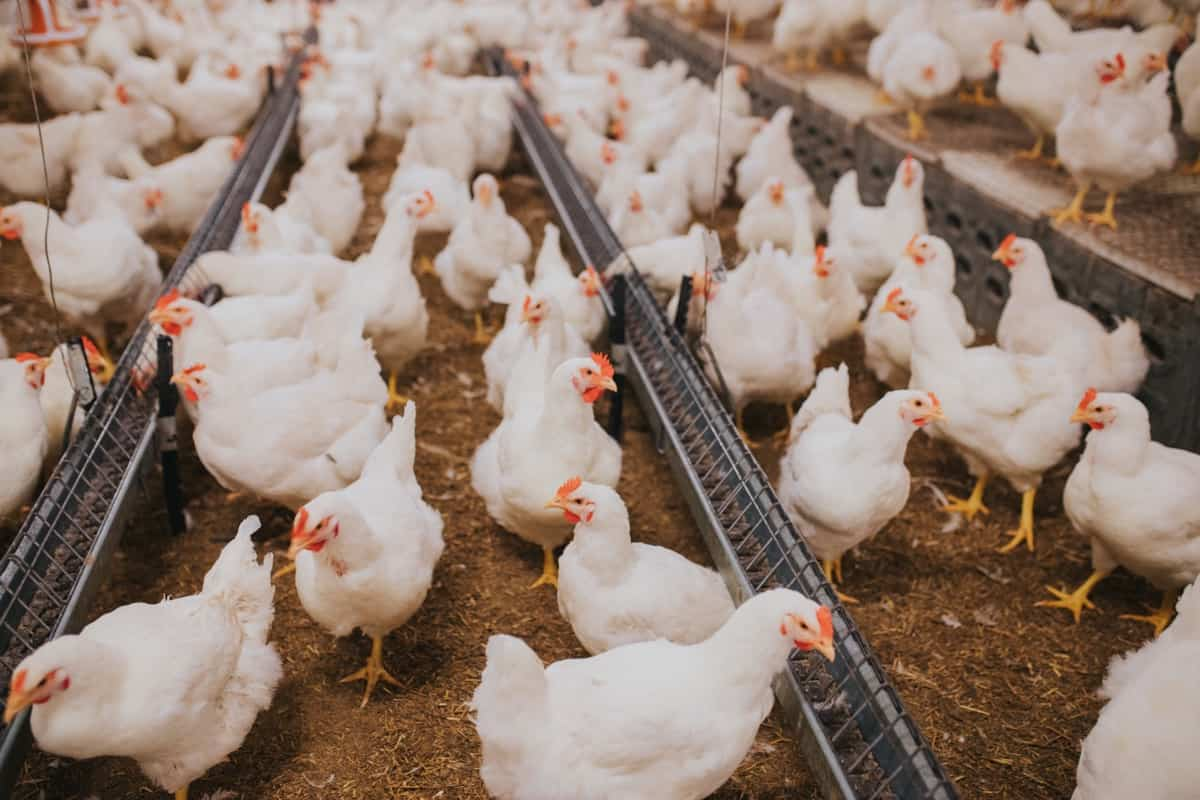
Additionally, formulating diets allows farmers to use cost-effective alternative feed ingredients, such as byproducts or non-traditional protein sources, which can lower feed expenses. The economic benefits of formulating poultry diets include improved profitability, reduced production costs, and poultry farming operations.
Tips for Maximizing Poultry Nutrition and Minimizing Feed Expenses
- Balanced Nutrition: Provide a well-balanced diet with essential nutrients to meet the specific needs of different poultry species and growth stages.
- Alternative Feed Sources: Incorporate cost-effective alternative feed ingredients like insect meals, food waste, and agro-industrial byproducts to reduce feed expenses.
- Precision Feeding: Implement precision feeding techniques to match nutrient requirements and avoid wastage.
- Optimal Feed Formulation: Formulate diets based on accurate nutritional analysis to ensure maximum nutrient utilization by the birds.
- Regular Health Checks: Regularly monitor the flock’s health to detect and promptly address any nutritional deficiencies or health issues.
- Hydration: Ensure a steady supply of fresh water to enhance feed intake and bird performance.
- Proper Storage: Store feed properly to avoid spoilage and maintain feed quality.
- Nutrient Density: Adjust the diet’s nutrient density based on the bird’s age, weight, and production stage for efficient nutrient utilization.
- Feeding Management: Implement feeding practices, such as controlled feeding and free-range grazing, to optimize nutrient intake and minimize wastage.
Conclusion
Managing chicken feed costs through economic strategies ensures profitable poultry production. By optimizing nutrition, exploring alternative feed sources, and implementing cost-saving measures, farmers can achieve both economic viability and nutritious poultry diets.
- Types of Pesticides Used in Agriculture: A Beginner’s Guide
- Economical Aquaculture: A Guide to Low-Budget Fish Farming
- 15 Common Planting Errors That Can Doom Your Fruit Trees
- How to Make Houseplants Bushy: Effective Tips and Ideas
- Innovative Strategies for Boosting Coconut Pollination and Yield
- Pollination Strategies for Maximum Pumpkin Yield
- The Complete Guide to Chicken Fattening: Strategies for Maximum Growth
- Natural Solutions for Tulip Problems: 100% Effective Remedies for Leaf and Bulb-Related Issues
- Revolutionizing Citrus Preservation: Towards a Healthier, Greener Future
- Natural Solutions for Peony Leaf and Flower Problems: 100% Effective Remedies
- Maximizing Profits with Avocado Contract Farming in India: A Comprehensive Guide
- Natural Solutions for Hydrangea Problems: 100% Effective Remedies for Leaf and Flowers
- The Ultimate Guide to Choosing the Perfect Foliage Friend: Bringing Life Indoors
- From Sunlight to Sustainability: 15 Ways to Use Solar Technology in Agriculture
- The Ultimate Guide to Dong Tao Chicken: Exploring from History to Raising
- The Eco-Friendly Makeover: How to Convert Your Unused Swimming Pool into a Fish Pond
- Mastering the Art of Delaware Chicken Farming: Essentials for Healthy Backyard Flocks
- 20 Best Homemade Fertilizers for Money Plant: DIY Recipes and Application Methods
- How to Craft a Comprehensive Free-Range Chicken Farming Business Plan
- Brighten Your Flock: Raising Easter Egger Chickens for Beauty and Bounty
- How to Optimize Your Poultry Egg Farm Business Plan with These Strategies
- Subsidy for Spirulina Cultivation: How Indian Government Schemes Encouraging Spirulina Farmers
- Ultimate Guide to Raising Dominique Chickens: Breeding, Feeding, Egg-Production, and Care
- Mastering the Art of Raising Jersey Giant Chickens: Care, Feeding, and More
- Ultimate Guide to Raising Legbar Chickens: Breeding, Farming Practices, Diet, Egg-Production
- How to Raise Welsummer Chickens: A Comprehensive Guide for Beginners
- How to Protect Indoor Plants in Winter: A Comprehensive Guide
- Ultimate Guide to Grow Bag Gardening: Tips, Tricks, and Planting Ideas for Urban Gardeners
- Guide to Lotus Cultivation: How to Propagate, Plant, Grow, Care, Cost, and Profit
- Agriculture Drone Subsidy Scheme: Government Kisan Subsidy, License, and How to Apply Online
- Ultimate Guide to Raising Araucana Chickens: Breed Profile, Farming Economics, Diet, and Care
- Bringing Hydroponics to Classroom: Importance, Benefits of Learning for School Students
- Ultimate Guide to Raising Polish Chickens: Breed Profile, Farming Economics, Diet, and Care
- Ultimate Guide to Raising Australorp Chickens: Profile, Farming Economics, Egg Production, Diet, and Care
- Silkie Chicken Farming: Raising Practices, Varieties, Egg Production, Diet, and Care
- Sussex Chicken Farming: Raising Practices, Varieties, Egg Production, Diet and Care